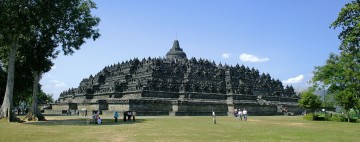Preserving Cultural Heritage
A number of events focused world attention on the need to act in response to threats to our precious heritage. The event that aroused particular international concern was the decision to build the Aswan High Dam in Egypt, which would have flooded the valley containing the Abu Simbel temples, a treasure of ancient Egyptian civilization.
In 1959, after an appeal from the governments of Egypt and Sudan, UNESCO launched an international safeguarding campaign. Archaeological research in the areas to be flooded was accelerated. Above all, the Abu Simbel and Philae temples were dismantled, moved to dry ground and reassembled.
The campaign cost about US$80 million, half of which was donated by some 50 countries, showing the importance of solidarity and nations' shared responsibility in conserving outstanding cultural sites. Its success led to other safeguarding campaigns, such as saving Venice and its Lagoon (Italy) and the Archaeological Ruins at Moenjodaro (Pakistan) , and restoring the Borobodur Temple Compounds (Indonesia).
Consequently, UNESCO initiated, with the help of the International Council on Monuments and Sites (ICOMOS), the preparation of a draft convention on the protection of cultural heritage.



